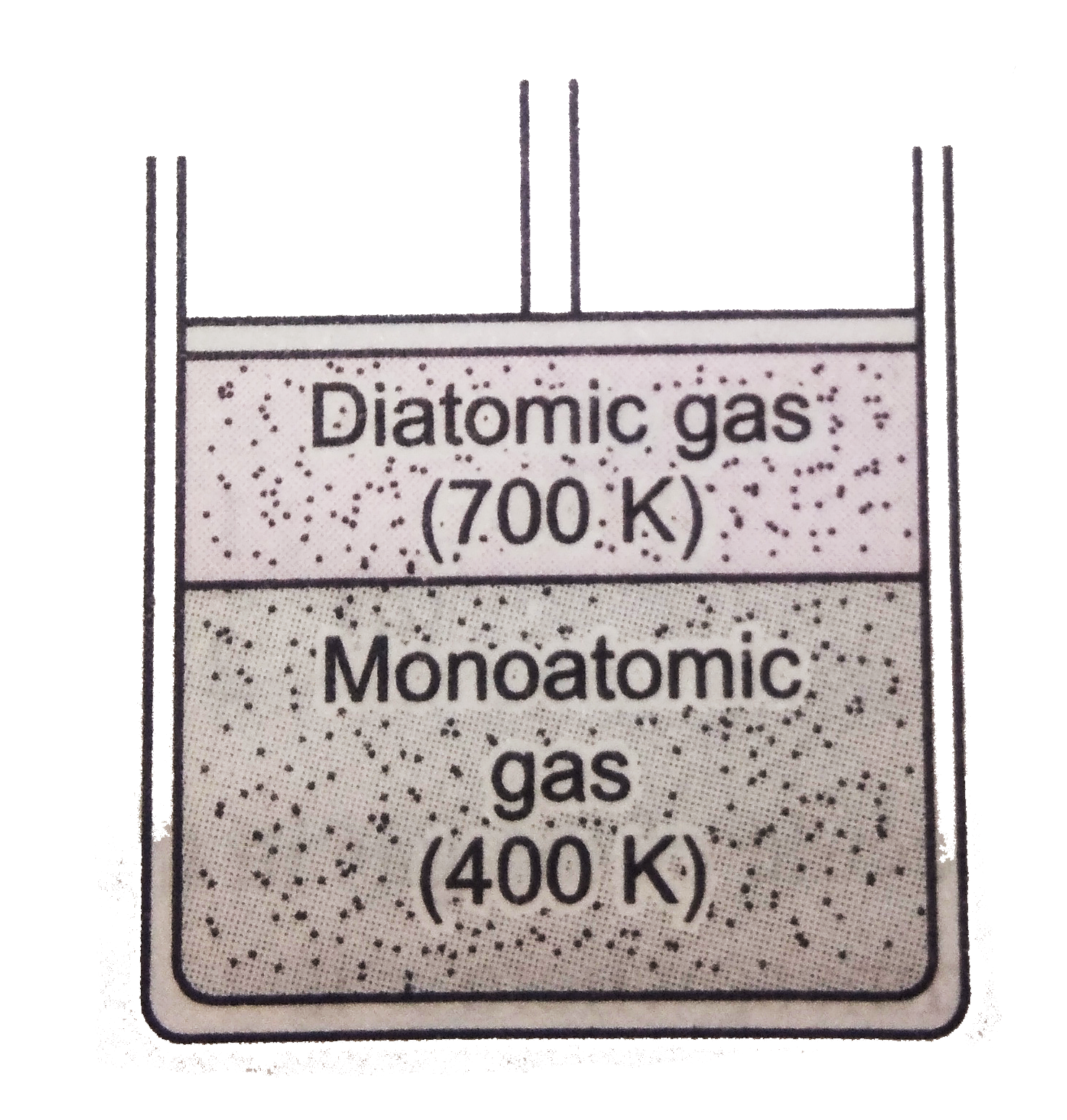Statement-1 : For a gas R/Cυ=0.4. The gas must be diatomic.
Statement-2 : For diatomic gases, Cυ=52R.
Statement-1 is ture, statement-2 is true and statement-2 is correct explanation of statement-1
Statement-1 is ture, statement-2 is true but statement-2 is not correct explanation of statement-1
Statement-1 is true, but statement-2 is false.
Statement-1 is false, but statement-2 is true.
The correct Answer is:A
RCυ=0.4=25
Cυ=52R, which is the case for diatomic gases. Both the statement are true and statement-2 is correct explanation of state -1.
Topper's Solved these Questions
Similar Questions
In Fig., a container is shown to have a movable (without friction) piston on top. The container and the piston are all made of perfectly insulating material allowing no heat transfer between outside and inside the container. The container is divided into two compartments by a rigid partition made of a thermally conducting material that allows slow transfer of heat. the lower compartment of the container is filled with 2 moles of an ideal monoatomic gas at 700 K and the upper compartment is filled with 2 moles of an ideal diatomic gas at 400 K. the heat capacities per mole of an ideal monoatomic gas are Cυ=32RandCP=52R, and those for an ideal diatomic gas are Cυe=52RandCP=72R.
Consider the partition to be rigidly fixed so that it does not move. when equilibrium is achieved, the final temperature of the gases will be

View SolutionStatement-1 : CP−C(υ)=R is true for monoatomic gases only.
Statement-2 : The relation applies equally to all gases.
View Solution
Knowledge Check
Assertion : For monoatomic gas, R/Cυ=0.67.
Reason : For a monoatomic gas Cυ=32R.AIf, both Assertion and reason are ture and the Reason is the correct explanation of the Assertion.BIf both, Assertion and reason are true but Reason is not a correct expationation of the Assertion.CIf Assertion is true but the Reason is false.DIf Both, Assertion and reason are false.If for a gas, RCV=0.67, the gas is
AdiatomicBmonoatomicCpolyatomicDmixture of diatomic and polyatomic gasesIn Fig., a container is shown to have a movable (without friction) piston on top. The container and the piston are all made of perfectly insulating material allowing no heat transfer between outside and inside the container. The container is divided into two compartments by a rigid partition made of a thermally conducting material that allows slow transfer of heat. the lower compartment of the container is filled with 2 moles of an ideal monoatomic gas at 700 K and the upper compartment is filled with 2 moles of an ideal diatomic gas at 400 K. the heat capacities per mole of an ideal monoatomic gas are Cυ=32RandCP=52R, and those for an ideal diatomic gas are Cυe=52RandCP=72R.
Now consider the partition to be free to move without friction so that the pressure of gases in both compartments is the same. the total work done by the gases till the time they achieve equilibrium will be
 A250 RB200 RC100 RD−100R
A250 RB200 RC100 RD−100R
What is the value of RCv for diatomic gas?
View SolutionStatement-1: A real gas nearly behaves like an ideal gas at low pressure and high temperature.
Statement-2: If the ratio of translational and rotational degree of freedom is 1.5 the gas must be diatomic
Statement-3: Most probable speed of a gas is proportional to absolute temperature of the gas.
View SolutionMention the degree of freedom for diatomic gas molecules without vibration.
View SolutionCpCV for Diatomic gas molecule is -
View SolutionA mixture of n1 moles of monoatomic gas and n2 moles of diatomic gas has γ=1.5
View Solution
